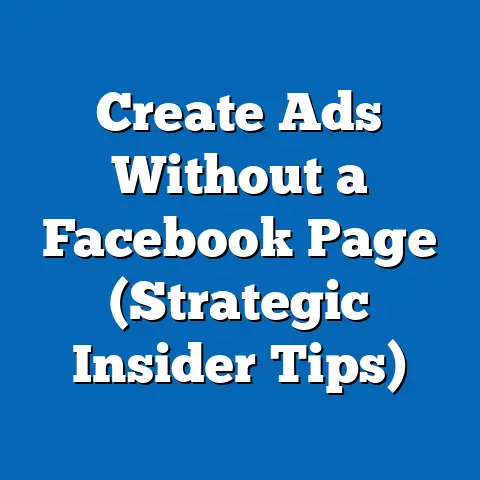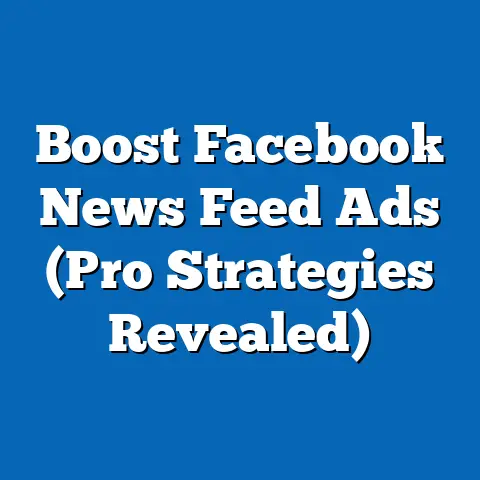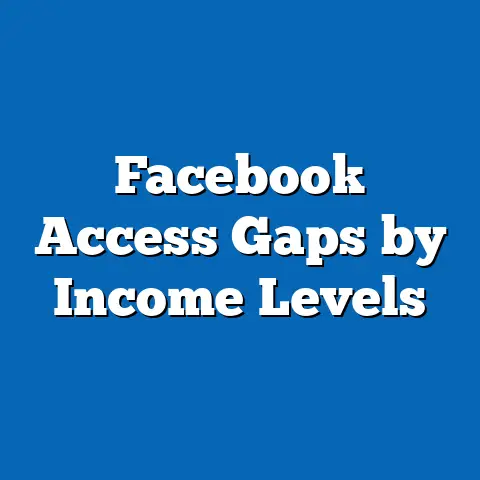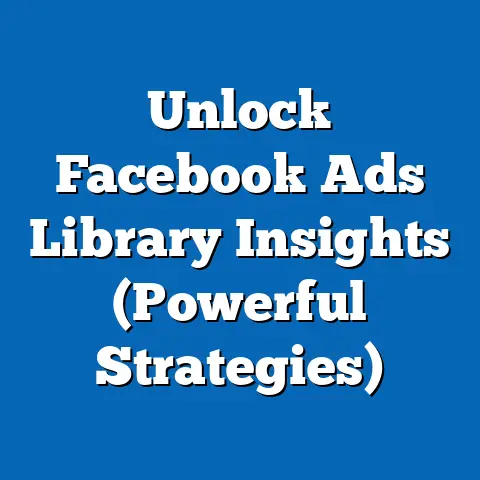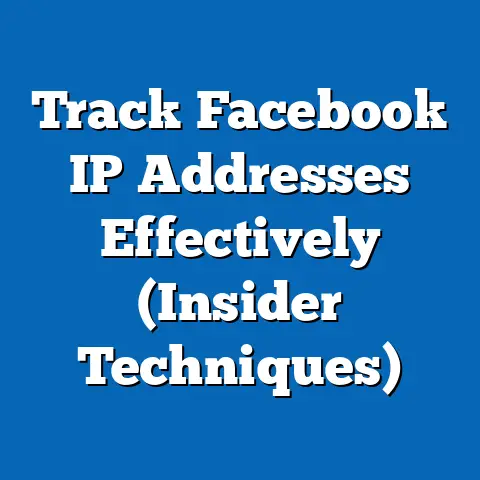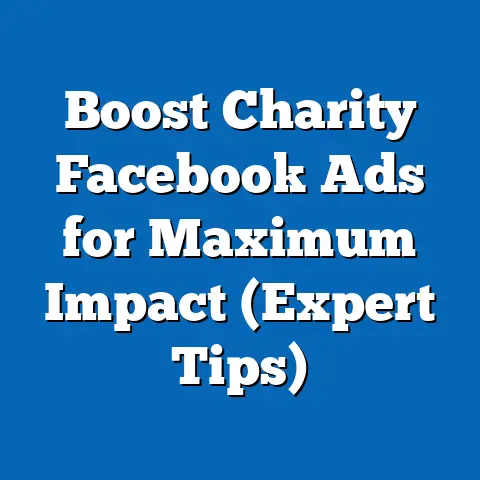Revitalize Facebook Ads Conversions (Proven Strategies)
Are your Facebook ads feeling a bit… lifeless? Are you throwing money into the Meta machine and seeing lackluster results? If you’re nodding your head, you’re not alone. Many businesses struggle to get the conversions they crave from their Facebook ad campaigns. But don’t despair! Facebook advertising, when done right, is a powerful tool for driving sales, building brand awareness, and fostering customer engagement.
Think of Facebook as a giant, bustling marketplace. Millions of potential customers are milling about, browsing, and connecting. Your ads are your storefront – and if they’re not attractive, engaging, and clearly pointing people towards a purchase, they’ll simply walk on by.
I’ve spent years navigating the ever-changing landscape of Facebook ads. I’ve seen strategies that soared and others that crashed and burned. I’ve learned firsthand that consistent effort, data-driven optimization, and a willingness to adapt are crucial for success. In this guide, I’m going to share proven strategies to revitalize your Facebook ad conversions and turn those casual browsers into loyal customers.
We’ll dive deep into understanding the conversion funnel, analyzing your current performance, targeting the right audience, crafting compelling ad copy and creative, optimizing your budget, and leveraging the power of the Facebook Pixel. Let’s get started!
1. Understanding Facebook Ads and the Conversion Funnel
Before we start tweaking and optimizing, let’s make sure we have a solid foundation. Understanding the fundamentals of Facebook ads and how they fit into the larger marketing puzzle is crucial.
Facebook ads are, essentially, paid messages that businesses use to reach specific audiences on the Facebook (and Instagram) platform. These ads can take many forms – images, videos, carousel ads, lead generation forms – and they can be targeted with incredible precision. Think of it as having the ability to whisper your message directly into the ear of your ideal customer.
Key Terms to Know:
- Impressions: The number of times your ad is displayed to users. It doesn’t mean they saw it or interacted with it, just that it was shown.
- Clicks: The number of times users clicked on your ad. This indicates interest, but it doesn’t guarantee a conversion.
- Click-Through Rate (CTR): The percentage of impressions that resulted in a click. A higher CTR usually indicates a more engaging and relevant ad.
- Conversions: The number of desired actions taken as a result of your ad. This could be a purchase, a sign-up, a lead submission, or any other goal you’ve defined.
- Conversion Rate: The percentage of clicks that resulted in a conversion. This is a critical metric for measuring the effectiveness of your ads.
- Cost Per Click (CPC): The amount you pay each time someone clicks on your ad.
- Cost Per Acquisition (CPA): The amount you pay for each conversion.
- Return on Ad Spend (ROAS): The revenue generated for every dollar spent on advertising. This is the ultimate measure of your ad campaign’s profitability.
- Return on Investment (ROI): Measures the profitability of an investment, considering the net profit relative to the investment cost.
I remember one time when I was running a campaign for a local bakery. We were getting tons of impressions and clicks, but almost no sales. Our CTR was fantastic, but our conversion rate was abysmal. It turned out that our landing page was slow and confusing, and people were abandoning their carts before completing their purchases. We fixed the landing page, and our conversions skyrocketed. This experience taught me the importance of looking beyond the surface metrics and understanding the entire customer journey.
The Conversion Funnel:
The conversion funnel represents the journey a potential customer takes from initial awareness to eventual purchase. Think of it as a series of steps, each one narrowing down the pool of potential customers until you’re left with the ones who actually convert.
- Awareness: This is the top of the funnel, where you’re trying to make people aware of your brand and product. Facebook ads can be used to reach a broad audience and introduce them to your business.
- Consideration: At this stage, potential customers are considering whether or not to buy your product. Your ads should provide more information, highlight benefits, and address any concerns they might have.
- Conversion: This is the bottom of the funnel, where you’re trying to close the deal. Your ads should be clear, concise, and include a strong call to action.
Each stage of the funnel requires a different approach. For example, an ad designed to raise awareness might focus on eye-catching visuals and a simple message, while an ad designed to drive conversions might feature a limited-time offer and a direct call to action like “Shop Now.”
How Facebook Ads Impact Each Stage:
- Awareness: Reach a wide audience with engaging content that introduces your brand. Use video ads, image ads, and carousel ads to tell your story.
- Consideration: Provide valuable information and highlight the benefits of your product or service. Use lead generation ads to collect contact information and nurture leads.
- Conversion: Drive sales with targeted ads that feature special offers and strong calls to action. Use retargeting ads to re-engage potential customers who have visited your website or interacted with your brand.
Key Takeaway: Understanding the conversion funnel is essential for creating effective Facebook ad campaigns. By tailoring your ads to each stage of the funnel, you can guide potential customers through the buying process and increase your chances of a conversion.
Next Steps: Familiarize yourself with the key metrics discussed above and start thinking about how your current Facebook ads are impacting each stage of the conversion funnel.
2. Analyzing Current Ad Performance
You can’t fix what you don’t measure. Before you start making changes to your Facebook ads, it’s crucial to understand how they’re currently performing. Data analysis is your best friend in this process.
I’ve seen countless businesses launch Facebook ad campaigns with high hopes, only to be disappointed by the results. Often, the problem isn’t the product or the targeting, but a lack of understanding of the data. They’re not tracking the right metrics, they’re not interpreting the data correctly, or they’re simply not paying attention to it at all.
Key Metrics to Track:
- Reach: How many unique users saw your ad.
- Impressions: How many times your ad was displayed.
- Frequency: The average number of times each user saw your ad. High frequency can lead to ad fatigue.
- CTR (Click-Through Rate): Percentage of impressions that resulted in a click. A good CTR indicates your ad is relevant and engaging.
- CPC (Cost Per Click): The amount you pay each time someone clicks your ad.
- Conversion Rate: Percentage of clicks that resulted in a conversion. This is a key indicator of your ad’s effectiveness.
- CPA (Cost Per Acquisition): The amount you pay for each conversion.
- ROAS (Return on Ad Spend): The revenue generated for every dollar spent on advertising.
- Relevance Score (Now called Ad Relevance Diagnostics): Facebook’s assessment of how relevant your ad is to its target audience. Higher scores usually lead to lower costs and better performance. This is now broken down into three metrics: Quality Ranking, Engagement Rate Ranking, and Conversion Rate Ranking.
Using Facebook Ads Manager for Performance Insights:
Facebook Ads Manager is your central hub for creating, managing, and analyzing your ad campaigns. It provides a wealth of data that can help you understand what’s working and what’s not.
- Navigate to Ads Manager: Log into your Facebook account and go to Ads Manager.
- Select Your Campaigns: Choose the campaign, ad set, or ad you want to analyze.
- Customize Your Columns: Click on “Columns” and select “Customize Columns.” Choose the metrics that are most important to you. I usually include Reach, Impressions, CTR, CPC, Conversion Rate, CPA, and ROAS.
- Set Your Date Range: Choose the date range you want to analyze. I recommend looking at data over a period of at least a week to get a clear picture of performance.
- Analyze Your Data: Look for trends and patterns in your data. Which ads are performing well? Which ads are underperforming? What are the key differences between them?
Creating a Performance Report:
Creating a regular performance report can help you stay on top of your ad campaigns and identify areas for improvement.
- Export Your Data: In Ads Manager, click on “Reports” and select “Export Table Data.”
- Choose Your File Format: Select the file format you prefer (CSV or Excel).
- Analyze Your Data: Open the file in your spreadsheet program and start analyzing your data.
- Identify Underperforming Ads: Look for ads with low CTRs, low conversion rates, and high CPAs.
- Investigate the Causes: Why are these ads underperforming? Is the targeting off? Is the ad copy weak? Is the landing page confusing?
- Develop an Action Plan: What changes can you make to improve the performance of these ads?
I once inherited a Facebook ad account that was a complete mess. The previous manager had set up dozens of campaigns with no clear strategy or tracking. The data was all over the place, and it was impossible to tell what was working and what wasn’t. I spent days cleaning up the account, setting up proper tracking, and creating a performance report. Once I had a clear picture of what was going on, I was able to identify the underperforming ads and make the necessary changes to improve performance.
Key Takeaway: Data analysis is essential for understanding and improving your Facebook ad performance. Use Facebook Ads Manager to track key metrics, create performance reports, and identify areas for improvement.
Next Steps: Spend some time in Facebook Ads Manager analyzing your current ad performance. Create a performance report and identify your underperforming ads. Start thinking about why these ads are struggling and what changes you can make to improve their performance.
3. Targeting the Right Audience
Imagine trying to sell snow shovels in Miami. You might have the best snow shovels in the world, but you’re targeting the wrong audience. The same principle applies to Facebook ads. If you’re not targeting the right audience, your ads will fall flat, no matter how compelling your ad copy or creative is.
I’ve seen businesses spend thousands of dollars on Facebook ads that were targeted to the wrong audience. They were essentially throwing money away. They hadn’t taken the time to understand their ideal customer, and they were targeting people who had no interest in their product or service.
The Importance of Audience Segmentation:
Audience segmentation is the process of dividing your target audience into smaller groups based on shared characteristics. This allows you to create more targeted and relevant ads that resonate with each group.
Think about it: a single ad message is unlikely to appeal to everyone. By segmenting your audience, you can tailor your message to the specific needs and interests of each group.
Various Targeting Options on Facebook:
Facebook offers a wide range of targeting options that allow you to reach specific audiences based on their demographics, interests, behaviors, and more.
- Demographics: Target users based on age, gender, location, education, job title, and other demographic information.
- Interests: Target users based on their interests, hobbies, and passions. Facebook gathers this information from the pages they like, the groups they join, and the content they interact with.
- Behaviors: Target users based on their online and offline behaviors, such as purchase history, travel habits, and device usage.
- Custom Audiences: Create custom audiences based on your existing customer data, such as email lists, website visitors, and app users.
- Lookalike Audiences: Create lookalike audiences based on your existing customer data. Facebook will find users who are similar to your best customers.
I remember working with a clothing boutique that was struggling to reach new customers. They were targeting a broad audience with generic ads, and they weren’t seeing much success. We decided to segment their audience based on age and interests. We created separate ad campaigns for different age groups, each with tailored ad copy and visuals. We also targeted users based on their interests in fashion, style, and specific brands. As a result, their ad performance improved dramatically.
Strategies for Refining Audience Targeting:
- Start with a Broad Audience: When you’re first starting out, it’s often helpful to start with a broad audience and then narrow it down based on performance data.
- Use A/B Testing: Test different targeting options to see which ones perform best.
- Analyze Your Data: Pay attention to the demographics, interests, and behaviors of the users who are converting.
- Refine Your Targeting: Based on your data, refine your targeting to focus on the audiences that are most likely to convert.
- Exclude Irrelevant Audiences: Exclude audiences that are not likely to convert. For example, if you’re selling high-end products, you might want to exclude users with low incomes.
Case Studies:
- Example 1: E-commerce Store: An e-commerce store selling organic skincare products targeted women aged 25-45 who were interested in natural beauty, wellness, and eco-friendly living. They used custom audiences to retarget website visitors and lookalike audiences to reach new customers who were similar to their existing customers. This resulted in a 30% increase in sales.
- Example 2: Local Restaurant: A local restaurant targeted people living within a 5-mile radius of the restaurant who were interested in dining out, local cuisine, and specific types of food (e.g., pizza, burgers, sushi). They used Facebook’s local awareness ads to reach people who were nearby and encourage them to visit the restaurant. This resulted in a 20% increase in foot traffic.
Key Takeaway: Targeting the right audience is crucial for Facebook ad success. Use audience segmentation and Facebook’s targeting options to reach the people who are most likely to convert.
Next Steps: Take a close look at your current audience targeting. Are you targeting the right people? Are you using audience segmentation effectively? Start experimenting with different targeting options to see what works best for your business.
4. Crafting Compelling Ad Copy and Creative
You’ve targeted the right audience, but now you need to grab their attention and persuade them to take action. This is where compelling ad copy and creative come into play.
Think of your ad as a tiny billboard in a crowded marketplace. You have a few seconds to capture someone’s attention and convince them that your product or service is worth their time and money.
I’ve seen businesses with amazing products and services fail to get results from their Facebook ads because their ad copy and creative were weak. They were using generic language, uninspired visuals, and unclear calls to action.
Elements of Effective Ad Copy:
- Headline: The headline is the first thing people will see, so it needs to be attention-grabbing and relevant. Use strong verbs, ask questions, and highlight benefits.
- Body Text: The body text should provide more information about your product or service and explain why it’s valuable. Focus on the benefits, not the features.
- Call to Action (CTA): The call to action tells people what you want them to do next. Use clear and concise language, such as “Shop Now,” “Learn More,” or “Sign Up.”
Tips for Writing Effective Ad Copy:
- Know Your Audience: Write in a language that resonates with your target audience.
- Highlight Benefits, Not Features: Focus on how your product or service will improve their lives.
- Use Strong Verbs: Use action-oriented verbs that encourage people to take action.
- Create a Sense of Urgency: Use language that creates a sense of urgency, such as “Limited Time Offer” or “While Supplies Last.”
- Keep it Short and Sweet: People have short attention spans, so keep your ad copy concise and to the point.
The Importance of Visuals:
Visuals are a crucial part of Facebook ads. They can help you capture attention, communicate your message, and build brand awareness.
Tips for Creating Eye-Catching Visuals:
- Use High-Quality Images and Videos: Use visuals that are clear, crisp, and visually appealing.
- Showcase Your Product or Service: Show your product or service in action.
- Use Bright Colors and Bold Designs: Use colors and designs that stand out from the crowd.
- Tell a Story: Use visuals to tell a story and connect with your audience on an emotional level.
- Use Text Overlays Sparingly: Don’t overcrowd your visuals with text.
Examples of High-Performing Ad Copy and Visuals:
- Example 1: Headline: “Stop Wasting Money on Expensive Skincare” Body Text: “Our organic skincare products are made with natural ingredients and are proven to deliver results. Get a free sample today!” Visual: A beautiful image of a woman with glowing skin. CTA: “Get Your Free Sample”
- Example 2: Headline: “Limited Time Offer: 50% Off All Pizzas” Body Text: “Order your favorite pizza online and get 50% off your entire order. Offer ends this week!” Visual: A mouthwatering image of a pizza. CTA: “Order Now”
A/B Testing Ad Copy and Creatives:
A/B testing is the process of testing different versions of your ad copy and creatives to see what resonates best with your audience. This is a crucial step in optimizing your Facebook ad campaigns.
Tips for A/B Testing:
- Test One Element at a Time: Test only one element at a time, such as the headline, body text, or visual.
- Use a Control Group: Use a control group to compare your results against.
- Run Your Tests for a Sufficient Amount of Time: Run your tests for at least a week to get statistically significant results.
- Analyze Your Results: Analyze your results to see which versions of your ad copy and creatives performed best.
- Implement Your Findings: Implement your findings and use the best-performing versions of your ad copy and creatives in your campaigns.
I once ran an A/B test on a Facebook ad campaign for a local gym. We tested two different headlines: “Get in Shape This Summer” and “Transform Your Body in 90 Days.” The “Transform Your Body in 90 Days” headline performed significantly better, resulting in a 20% increase in click-through rate. This simple test helped us improve the performance of our ad campaign and drive more leads to the gym.
Key Takeaway: Compelling ad copy and creative are essential for capturing attention and persuading people to take action. Use strong headlines, benefit-driven body text, eye-catching visuals, and clear calls to action. A/B test different versions of your ad copy and creatives to see what resonates best with your audience.
Next Steps: Review your current ad copy and creatives. Are they compelling? Are they attention-grabbing? Are they clearly communicating your message? Start experimenting with different versions of your ad copy and creatives to see what works best for your business.
5. Optimizing Ad Budgets and Bidding Strategies
You’ve got your targeting dialed in, your ad copy is captivating, and your visuals are stunning. But if you’re not managing your ad budget effectively, you’re still leaving money on the table.
I’ve seen businesses waste a lot of money on Facebook ads because they didn’t understand how to set budgets and optimize their bidding strategies. They were either overspending on ads that weren’t performing well, or they were underspending and missing out on potential conversions.
Setting Budgets Effectively:
- Start Small: When you’re first starting out, it’s often best to start with a small budget and gradually increase it as you see results.
- Consider Your Goals: Your budget should be based on your goals. Are you trying to generate leads? Drive sales? Build brand awareness?
- Track Your Results: Track your results closely and adjust your budget accordingly.
- Use Budget Optimization: Facebook offers budget optimization features that can help you automatically allocate your budget to the best-performing ads.
Facebook’s Bidding Options:
Facebook offers two main bidding options: automatic and manual.
- Automatic Bidding: Facebook automatically sets your bids based on your budget and your goals. This is a good option for beginners or for campaigns where you don’t have a lot of data to work with.
- Manual Bidding: You set your bids manually. This gives you more control over your spending, but it requires more expertise and data analysis.
When to Use Each Bidding Option:
- Automatic Bidding: Use automatic bidding when you’re first starting out, when you don’t have a lot of data, or when you want to simplify your bidding process.
- Manual Bidding: Use manual bidding when you have a lot of data, when you want more control over your spending, or when you want to optimize for specific goals.
Strategies for Optimizing Ad Spend:
- Monitor Your Performance: Monitor your performance closely and adjust your bids and budgets accordingly.
- Use A/B Testing: A/B test different bidding strategies to see what works best for your business.
- Adjust Based on Performance Data: Adjust your bids and budgets based on performance data. For example, if you see that a particular ad is performing well, you might want to increase your bid to get more impressions.
- Consider Seasonal Trends: Consider seasonal trends when setting your budgets. For example, you might want to increase your budget during the holiday season.
- Use Rule-Based Automation: Facebook offers rule-based automation features that can help you automatically adjust your bids and budgets based on specific conditions. For example, you can set a rule to automatically increase your bid when your CPA falls below a certain threshold.
I once worked with a client who was using automatic bidding on their Facebook ad campaigns. They were getting decent results, but they weren’t maximizing their ROI. We switched to manual bidding and started optimizing their bids based on performance data. As a result, their ROAS increased by 30%.
Key Takeaway: Optimizing your ad budgets and bidding strategies is crucial for maximizing your ROI. Set budgets effectively, choose the right bidding option, and monitor your performance closely. Adjust your bids and budgets based on performance data and seasonal trends.
Next Steps: Review your current ad budgets and bidding strategies. Are you setting budgets effectively? Are you using the right bidding option? Start experimenting with different bidding strategies to see what works best for your business.
6. Utilizing Facebook Pixel and Retargeting Strategies
Imagine walking into a store, browsing around, and then leaving without buying anything. The store owner has no idea who you are or what you were interested in. That’s how it used to be with online advertising. But with the Facebook Pixel, you can track website visitors and retarget them with relevant ads.
I’ve seen businesses transform their ad performance by leveraging the power of the Facebook Pixel and retargeting strategies. They were able to re-engage potential customers who had visited their website but didn’t convert, and they were able to drive significantly more sales.
What is Facebook Pixel?
The Facebook Pixel is a small piece of code that you place on your website. It tracks the actions that people take on your website, such as visiting pages, adding items to their cart, and making purchases. This data allows you to create more targeted and effective ad campaigns.
Benefits of Using Pixel:
- Track Conversions: Track conversions on your website and measure the effectiveness of your ads.
- Retarget Audiences: Retarget website visitors with relevant ads.
- Create Lookalike Audiences: Create lookalike audiences based on your website visitors.
- Optimize Ads: Optimize your ads for conversions.
- Measure ROI: Measure the ROI of your ad campaigns.
Creating Effective Retargeting Campaigns:
Retargeting campaigns target people who have already interacted with your brand, such as website visitors, app users, and people who have engaged with your Facebook page.
Strategies for Retargeting:
- Retarget Website Visitors: Retarget people who have visited your website but didn’t convert. Show them the products they were looking at or offer them a special discount.
- Retarget Cart Abandoners: Retarget people who added items to their cart but didn’t complete their purchase. Remind them of the items they left behind and offer them free shipping or a discount.
- Retarget Engaged Users: Retarget people who have engaged with your Facebook page, such as liking your posts, watching your videos, or visiting your website from Facebook. Show them relevant ads that encourage them to take the next step.
I worked with an e-commerce store that was struggling with cart abandonment. We implemented a retargeting campaign that targeted people who had added items to their cart but didn’t complete their purchase. We showed them the items they left behind and offered them free shipping. As a result, their cart abandonment rate decreased by 20%.
Success Stories:
- Example 1: E-commerce Store: An e-commerce store used retargeting to target website visitors who had viewed specific product pages but didn’t add the items to their cart. They showed them ads featuring those products with a special discount. This resulted in a 15% increase in sales.
- Example 2: Lead Generation: A lead generation company used retargeting to target people who had downloaded a free ebook but didn’t request a consultation. They showed them ads highlighting the benefits of their services and encouraging them to schedule a consultation. This resulted in a 10% increase in leads.
Key Takeaway: The Facebook Pixel and retargeting strategies are powerful tools for driving conversions. Use the Pixel to track website visitors and retarget them with relevant ads. Create retargeting campaigns that target website visitors, cart abandoners, and engaged users.
Next Steps: Install the Facebook Pixel on your website. Start creating retargeting campaigns that target website visitors, cart abandoners, and engaged users. Monitor your results closely and adjust your campaigns accordingly.
7. Staying Updated with Facebook Ad Policies and Trends
The Facebook ad ecosystem is constantly evolving. New features are being added, policies are being updated, and trends are changing. To stay ahead of the curve, it’s crucial to stay informed about the latest news and best practices.
I’ve seen businesses get their ads disapproved or even have their accounts suspended because they weren’t aware of Facebook’s advertising policies. I’ve also seen businesses miss out on opportunities because they weren’t aware of the latest trends and best practices.
Importance of Being Aware of Facebook’s Advertising Policies:
Facebook has strict advertising policies that you must adhere to. These policies cover a wide range of topics, including prohibited content, targeting, and ad creative. Violating these policies can result in ad disapproval or account suspension.
Current Trends in Facebook Advertising:
- Video Ads: Video ads are becoming increasingly popular. They’re more engaging than image ads and can be used to tell a story and connect with your audience on an emotional level.
- Influencer Partnerships: Influencer partnerships are a great way to reach a wider audience and build trust.
- Storytelling: Storytelling is a powerful way to connect with your audience and build brand awareness.
- Augmented Reality (AR) Ads: AR ads allow users to interact with your products in a virtual environment.
- Personalized Ads: Personalized ads are becoming increasingly important. Use data to personalize your ads and show people ads that are relevant to their interests.
Encouraging Continuous Learning:
The best way to stay updated with Facebook ad policies and trends is to continuously learn and adapt.
- Read the Facebook Advertising Policies: Familiarize yourself with Facebook’s advertising policies.
- Follow Industry Blogs and Newsletters: Follow industry blogs and newsletters to stay informed about the latest news and best practices.
- Attend Webinars and Conferences: Attend webinars and conferences to learn from experts and network with other advertisers.
- Experiment with New Features: Experiment with new features and strategies to see what works best for your business.
- Join Facebook Groups: Join Facebook groups to connect with other advertisers and share tips and advice.
Key Takeaway: The Facebook ad ecosystem is constantly evolving. Stay updated with Facebook ad policies and trends by continuously learning and adapting.
Next Steps: Read the Facebook Advertising Policies. Follow industry blogs and newsletters. Attend webinars and conferences. Experiment with new features. Join Facebook groups.
Conclusion
Revitalizing your Facebook ads conversions is an ongoing process that requires continuous analysis, optimization, and adaptation. By understanding the conversion funnel, analyzing your current performance, targeting the right audience, crafting compelling ad copy and creative, optimizing your budget, and leveraging the power of the Facebook Pixel, you can significantly improve your results.
Remember, there’s no magic bullet. It takes consistent effort, data-driven decision-making, and a willingness to experiment to find what works best for your business. Don’t be afraid to try new things, test different strategies, and learn from your mistakes.
The key to success is to stay informed, stay adaptable, and never stop learning. The Facebook ad ecosystem is constantly evolving, and the strategies that work today might not work tomorrow. By staying on top of the latest trends and best practices, you can ensure that your Facebook ads continue to drive conversions and help you achieve your business goals.
So, take the knowledge you’ve gained from this guide and put it into action. Start analyzing your data, refining your targeting, and optimizing your ad copy and creative. Monitor your results closely and adjust your strategies as needed. With a little effort and perseverance, you can revitalize your Facebook ads conversions and unlock the full potential of this powerful advertising platform. Now go forth and conquer the Facebook marketplace!

